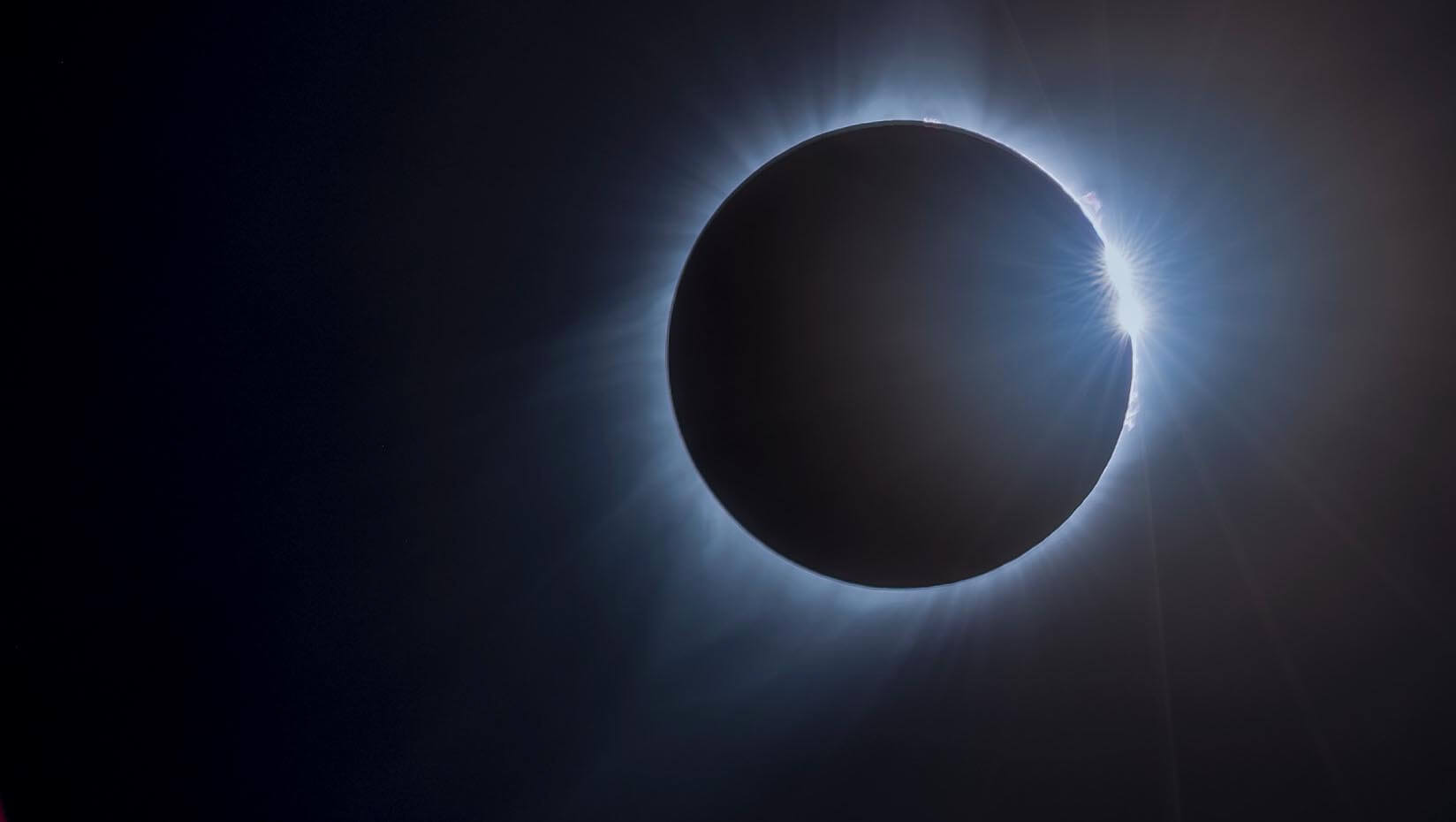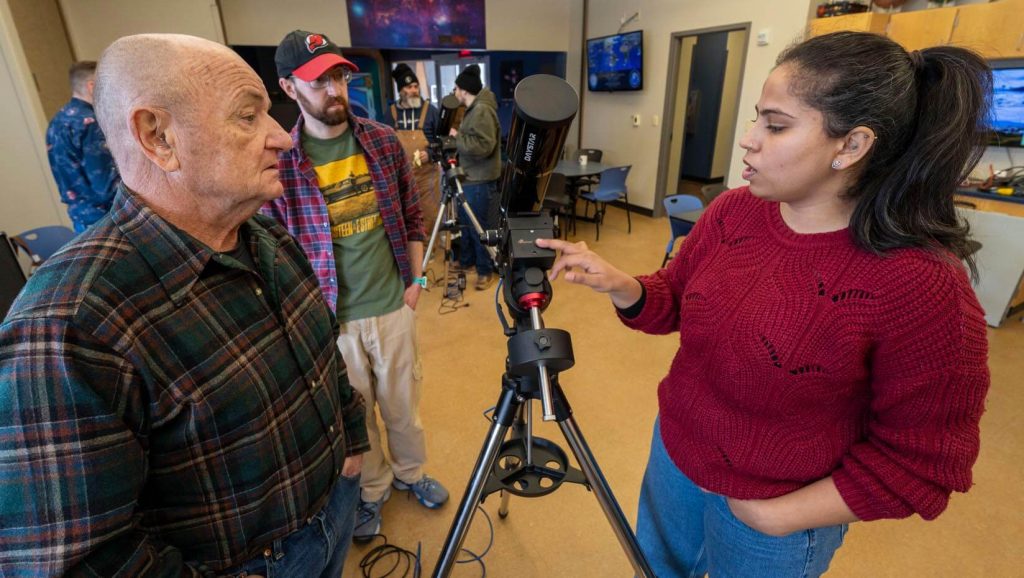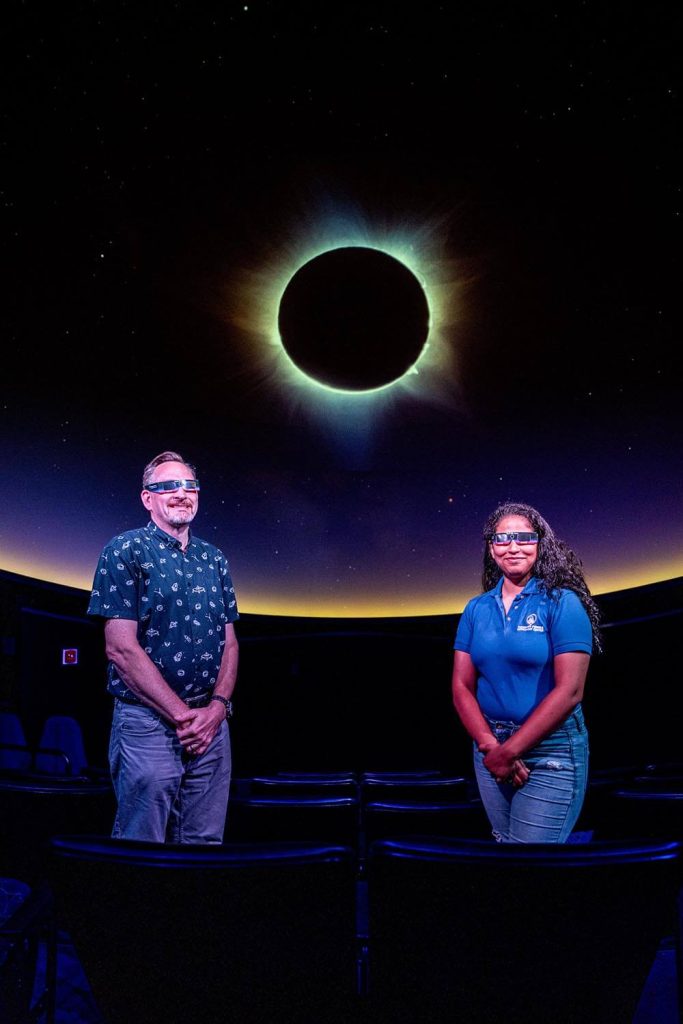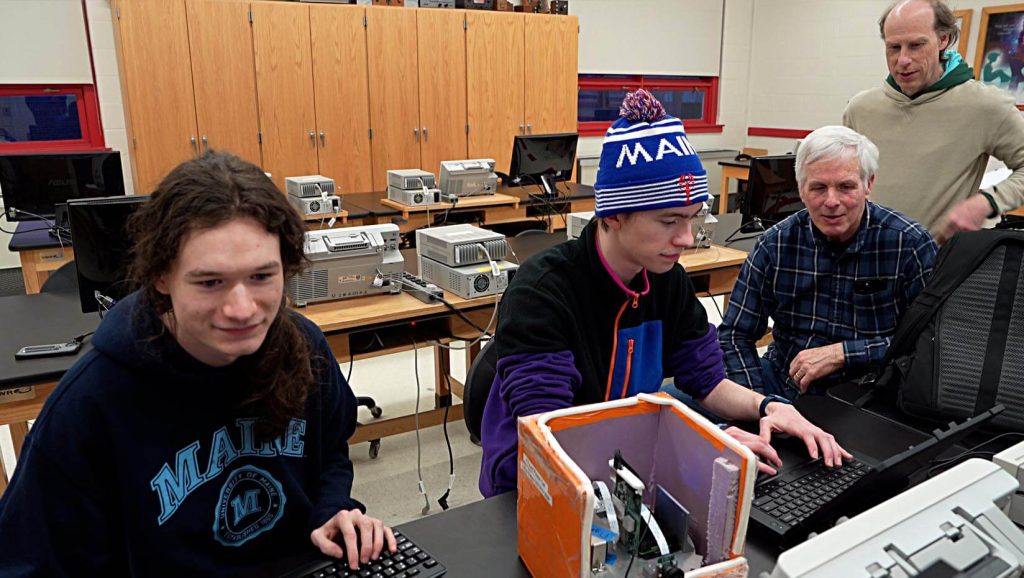
UMaine projects expanding nationwide access to 2024 total solar eclipse
Jules Vázquez’s eyes were glued to a four-foot-tall, high-tech telescope being assembled in front of her at the Versant Power Astronomy Center. The telescope has an 80-millimeter lens and is equipped with a specialized camera and small computer. Astronomy center Director Shawn Laatsch was teaching Jules, a high school student at Baxter Academy for Technology and Science, and other astronomical enthusiasts how to use these telescopes to view and study the total solar eclipse on April 8.
Jules; their father, Pedro Vázequz; and other secondary school students will travel four hours and 275 miles from South Portland to Mars Hill to gather images of the eclipse as part of a nationwide citizen science project: the Continental-America Telescopic Eclipse (CATE2024) experiment. Laatsch is the Northeast coordinator of the project, which is led by the Southwest Research Institute in San Antonio. He equipped and trained Vázquez’s group and others across the region with help from his Ph.D. student, Nikita Saini.

The CATE2024 experiment is one example of how UMaine students and faculty are leading the nation in projects that expand access to a rare cosmic spectacle, engage children with STEM activities and empower people to undertake important scientific and engineering work.
For Jules, participating in CATE2024 while witnessing their first total solar eclipse is both nerve-wracking and exciting. The last one visible from Maine happened in 1963, and the next is expected to occur in 2079.
“I hope we have a nice day,” said Jules.
Citizen scientists exploring the cosmos
 Teams of science enthusiasts — children and adults — located across 35 stations from Texas to Maine will gather eclipse images for CATE2024. There will be three teams in Maine: Jules’ group, one in Millinocket and a third involving Laatsch, Saini and other UMaine graduate students in Jackman.
Teams of science enthusiasts — children and adults — located across 35 stations from Texas to Maine will gather eclipse images for CATE2024. There will be three teams in Maine: Jules’ group, one in Millinocket and a third involving Laatsch, Saini and other UMaine graduate students in Jackman.
The images will provide light data on the sun’s atmosphere, or corona. The corona, the ring of light around the moon when it blocks out the sun, is only visible during a total solar eclipse. By studying the corona, researchers hope to learn more about what affects it, how it changes over time and how it impacts Earth.
Genius Black helped form the group that will be participating in CATE2024 from Mars Hill. He was learning how to use the advanced telescopes for the project alongside Jules and Pedro. While he had never set up an advanced telescope before, Black was a quick learner, given his background with complex photography and music equipment. He said he joined CATE2024 to expose more children of color to unique STEM-related experiences.
“We’re really here to make connections and let people know that we all can look up at the sky,” Black said. “I encourage them to equally enjoy nature. It’s for all people.”
The third Maine group involves students and teachers from Millinocket area schools, among others, who will watch the eclipse and gather data from a camp on Ambajejus Lake, located 20 minutes northwest of Millinocket.
“It’s a once-in-a-lifetime opportunity to help out these amazing science organizations,” said Kyle Leathers, who teaches seventh and eighth grade social studies. “We may not get another chance to do something like this. It’s a great thing for the school and the community.”
Another group member, Gabe Whitehouse, will attend UMaine in the fall to study engineering and physics.
Eclipse livestream
As Laatsch and Saini empower the next generation of scientists, the UMaine High Altitude Ballooning Group is working on a project that will allow anyone to witness the eclipse from anywhere, including from their smartphones and computers. The group, led by Rick Eason, associate professor emeritus of electrical and computer engineering, will launch a balloon equipped with several cameras and other equipment to live stream the eclipse from the stratosphere.
UMaine is among 75 institutions making up a combined 53 teams participating in the Nationwide Eclipse Ballooning Project led by Montana State University (MSU). The teams are divided into nine pods, and the UMaine group is a pod leader.

The undergraduate and graduate students involved in the project help design, test and troubleshoot the equipment systems like professional engineers. A computer engineering major, Noah Lambert, helped run workshops in Orono, Maryland and Minnesota for students, faculty and staff to discuss strategies for refining the camera, data, tracking and control systems that will be attached to their balloons.
In a lab in Barrows Hall, student Aeden Bryant was hard at work programming a small Raspberry Pi single-board computer to control the balloon’s video systems. A 360-degree camera encapsulated in a protective, thick foam box sat next to Bryant as he typed the coding that would allow his team to direct it.
“It’s cool going on the balloon recoveries and launching the balloons, and seeing the video from very high up is a lot of fun,” Bryant said, “and then also learning and getting a lot of hands-on experience with the video system and transmitting the video all the way up, 100,000 feet in the air to the ground.”
Students in the UMaine High Altitude Ballooning Group aren’t the only ones expanding their skill sets. By participating in CATE2024, Saini has refined her talents in teaching, public speaking and simplifying complex information. In addition to training citizen scientists from Maine and beyond on how to use advanced telescopes, she has also delivered several eclipse-themed talks across eastern Maine.
“Total solar eclipses are just incredible things that you see once in your lifetime and remember throughout your lifetime,” Saini said.
The Versant Power Astronomy Center at UMaine has sought to excite and educate people about the total solar eclipse through various programs and resources. Learn more by visiting umaine.edu/eclipse.
Contact: Marcus Wolf, 207.581.3721; marcus.wolf@maine.edu
